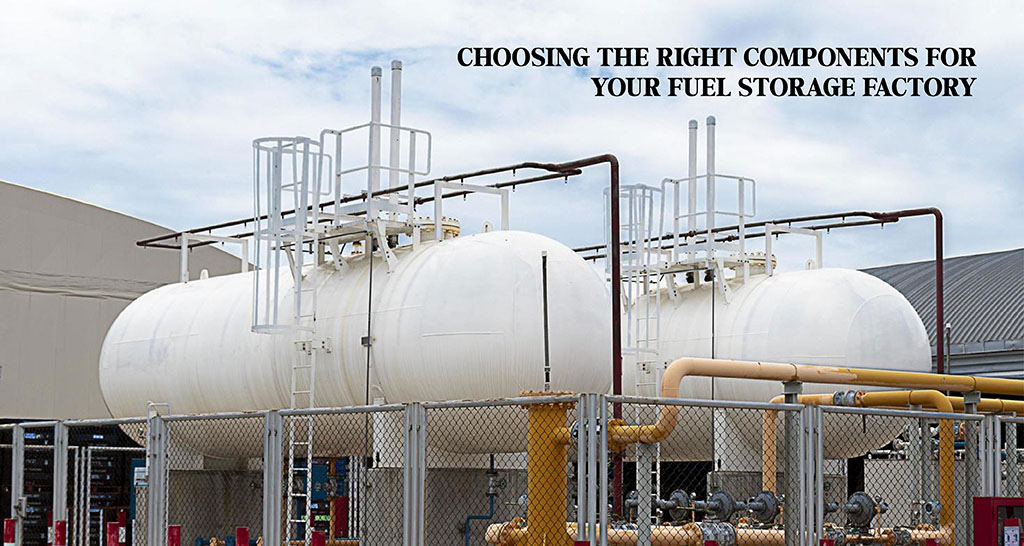Have you ever wondered where the gas in your car comes from or how that cozy heat in your home arrives? The answer lies in a network of fuel storage facilities – keeping the world moving. But these facilities aren’t just warehouses; they’re intricate systems requiring careful planning and the right equipment.
Today, we’ll explore the critical components in fuel storage that ensure safety, efficiency, and smooth operation. So, whether you’re a business owner starting a storage business or just curious about the inner workings of these vital facilities, this guide unlocks the secrets. By the end, you’ll possess the insights to navigate the intricate world of fuel storage components.
So, without further ado, let’s get started!
Essential Considerations: The Foundation for Success
Before diving into specific components, several key factors need careful consideration. The first and foremost is the type of fuel you’ll be storing. Different fuels, like gasoline, diesel, or biofuels, have varying storage requirements. Next comes storage capacity. Think beyond your current needs. Consider potential future expansion or peak demand periods to avoid costly upgrades down the line.
Safety and regulations are paramount: Adherence to local, national, and international safety standards like NFPA (National Fire Protection Association) and API (American Petroleum Institute) is absolutely essential. Environmental regulations on emissions, spill prevention, and containment must also be factored in.
Finally, create a realistic budget. While cost is a concern, prioritize quality and functionality over the cheapest options to ensure long-term safety and efficiency.
Key Components: Building Blocks for a Secure System
Now, let’s delve into the critical components that make up a well-equipped fuel storage facility.
1. Storage Tanks
Storage tanks are the workhorses of any fuel storage facility. They come in two main configurations:
- Aboveground Tanks: These have easier access for maintenance and inspection but are more vulnerable to weather and impact.
- Underground Tanks: Offer better protection from the elements but require more planning for access.
Choosing the right material for tanks is very important. Steel is a common choice, but fiberglass or tanks with double walls can better resist rust, especially for certain fuels.
Getting the size of your tanks right is crucial. Think about:
- Current storage needs
- Future expansion plans
- Available space
Remember, picking the right storage tank is foundational for a fuel storage facility that’s both safe and effective.
2. Piping and Valves
Choosing the right piping and valves is crucial for maintaining smooth and safe fuel flow in your facility. The material of these components is particularly important. Materials resistant to corrosion, like steel or certain specialized plastics, are selected based on the fuel storage type. The size and design of the pipes also play a key role in ensuring optimal flow rates and minimizing any pressure drops that could reduce efficiency.
Valves act as the control points within the system:
- Gate Valves provide a complete shutoff capability, which is essential for maintenance activities or in emergency situations.
- Ball Valves are used to regulate the flow smoothly during normal operations.
- Check Valves are critical for preventing backflow, thus ensuring both safety and the correct operation of the system.
For those seeking valves that respond quickly, especially in situations requiring rapid shutoff to prevent accidents or system failures, fast acting solenoid valves from Clark Cooper are often considered. The valves use electromagnets to open and close rapidly, making them perfect for automated emergency shutoffs or managing system irregularities.
Remember, with the appropriate selection of piping and valves, you can ensure that fuel not only flows freely but also securely, keeping your operation running smoothly and safely.
3. Incorporate Venting Systems
Incorporating venting systems into your fuel storage facility is essential for maintaining safety and preventing potential hazards. Venting systems are designed to manage the build-up of hazardous fumes that can occur inside fuel storage tanks, a natural result of fuel evaporation and temperature changes. These systems allow gases to escape, thus preventing excessive pressure build-up that could lead to tank ruptures or explosions. Additionally, venting systems help reduce the emission of volatile organic compounds (VOCs) into the atmosphere, contributing to environmental protection efforts.
But remember, it is essential to select the right type of venting. Whether fixed-roof, floating-roof, or a vapor recovery system—depends on the type of fuel stored, the size of the storage facility, and local environmental regulations.
4. Use Reliable Gauging and Monitoring Equipment
These technologies enable real-time tracking of critical parameters such as fuel levels, temperature, and pressure within tanks. This continuous monitoring is essential for ensuring that operations run smoothly, preventing overfills, and detecting potential leaks early on, which could otherwise lead to environmental contamination and safety hazards.
Similarly, monitoring equipment plays a key role in maintaining the integrity of the fuel by alerting operators to changes in conditions that could affect fuel quality, such as temperature fluctuations or the presence of water.
The Last Lines
Selecting the right components for your fuel storage facility is a crucial decision. So, carefully consider your specific needs and consult with experienced engineers who can guide you through the selection process and ensure your facility complies with all relevant safety and environmental regulations.

